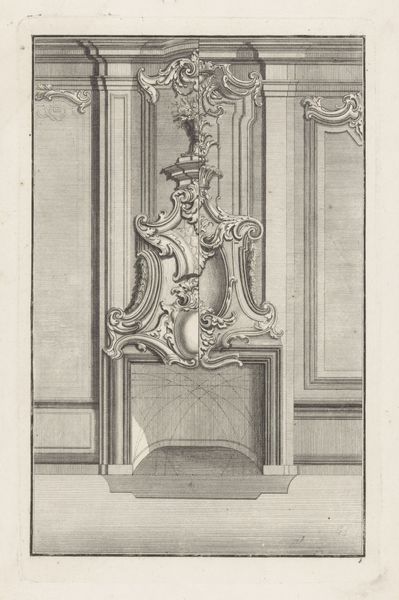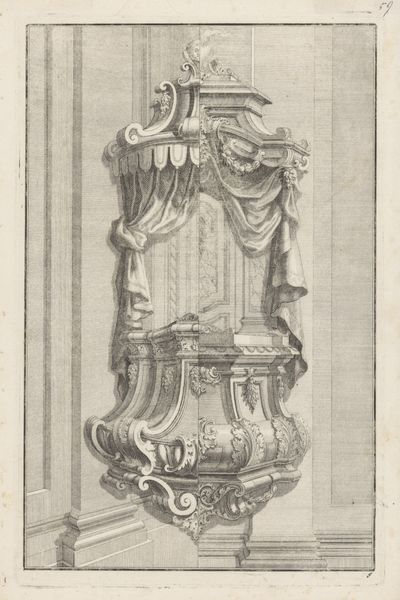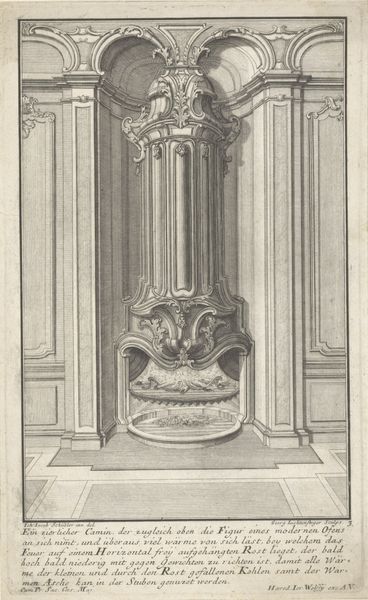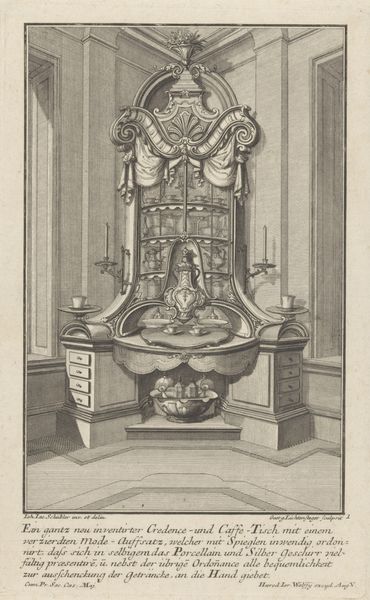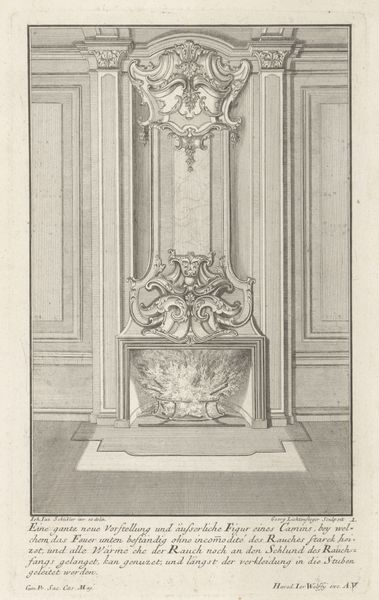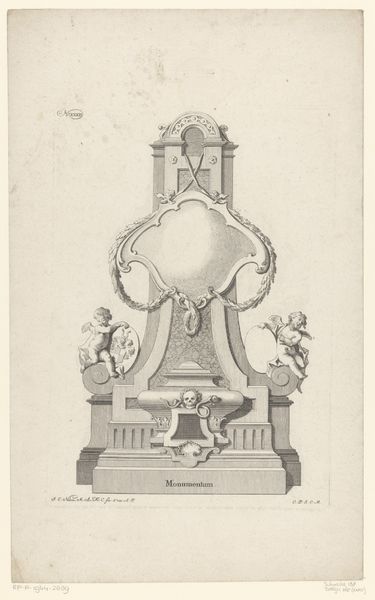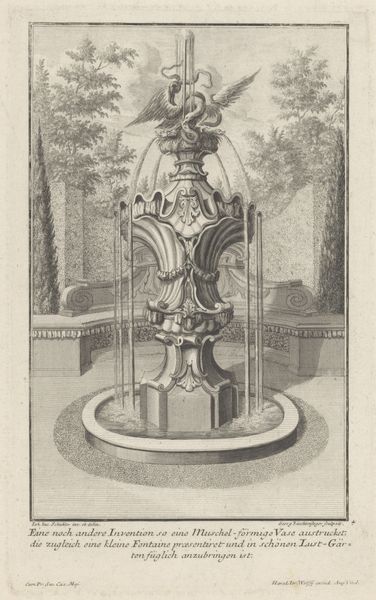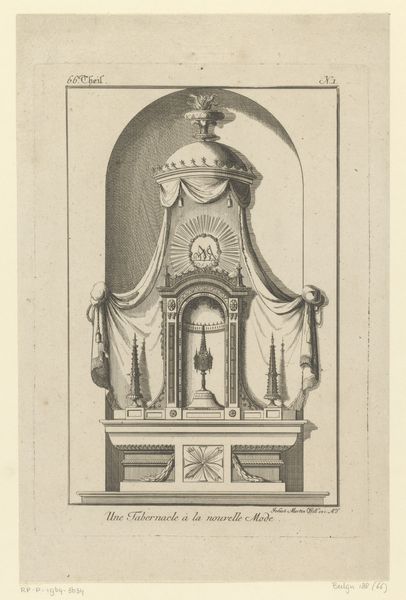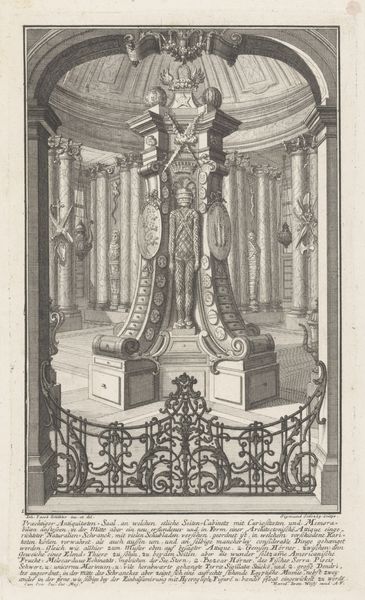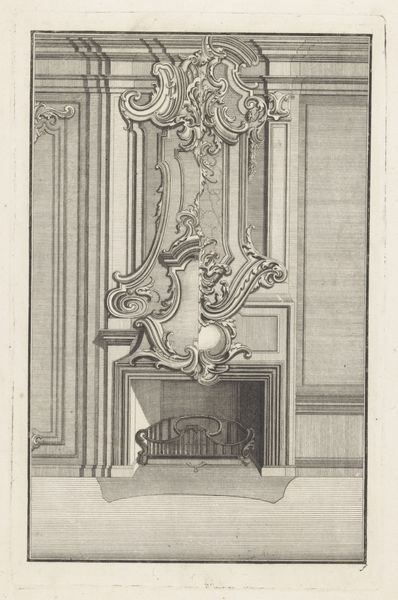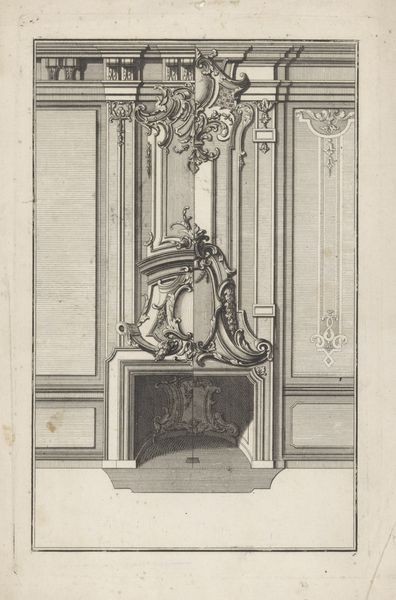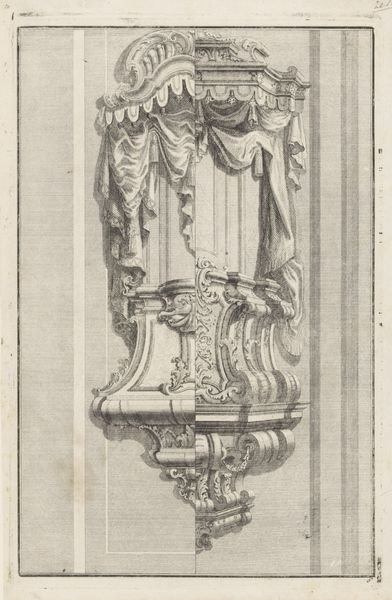
print, engraving
#
baroque
# print
#
old engraving style
#
engraving
Dimensions: height 289 mm, width 178 mm
Copyright: Rijks Museum: Open Domain
Curator: Editor: Here we have "Credens met spiegel," an engraving from after 1724, made by Georg Lichtensteger. It's this highly detailed rendering of a baroque credenza with a mirror. What immediately strikes me is the texture—it feels very rich despite being a print. How would you approach analyzing this piece? Curator: I'm particularly interested in the relationship between the represented object, a luxury item, and the medium, an engraving. Who would have consumed this image and what does that say about its purpose? Is it purely aspirational, or does it function as a template for artisans? Editor: That’s a great point! I hadn’t considered the potential utility of the engraving. So, it's not just about displaying wealth, but maybe about circulating design ideas and influencing craft production? The means of production become quite interesting – the skilled labor needed for the engraving process itself... Curator: Precisely! The material reality of the engraving, the labor involved in its creation, directly contrasts with the opulence it depicts. It almost democratizes the design, bringing luxury into the homes of those who might never own such a credenza. Think about how the Baroque style, usually associated with handcrafted objects, here gets reproduced through a very different process, transforming ideas around skill. Editor: I see, the print medium makes accessible what would be exclusively hand-made. Would prints such as this contribute to design standardization or do they rather promote different versions by individual makers? Curator: I'd wager both. The print presents a definitive image, a ‘correct’ way of doing Baroque, setting a benchmark. Simultaneously, the inherent limitations of mass production and regional skill variations are at play here. Each artisan then interprets and adapts to their context, offering potentially diverging results from this standardized template, reflecting differences in access to resources or training. Editor: So, it becomes this fascinating intersection of aspiration, skill, and material constraints. Thanks for that, it helps me to frame my initial perceptions about this print in terms of labor and consumption, rather than just “style.” Curator: Absolutely. Paying attention to how the work was made gives us critical insights into the culture surrounding its creation.
Comments
No comments
Be the first to comment and join the conversation on the ultimate creative platform.
